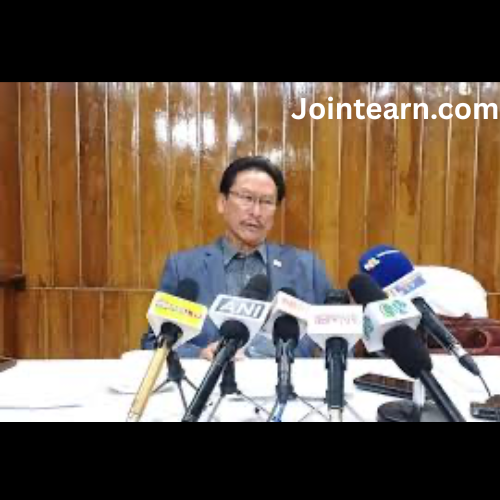New Delhi: In a development that could reshape the way law enforcement communicates with the media, the Supreme Court of India on Thursday sought responses from the Centre and state governments on a proposed manual outlining guidelines for police media briefings. The initiative, spearheaded by a senior advocate assisting the court as amicus curiae, aims to ensure that information shared by the police neither undermines the dignity and privacy of victims nor leads to prejudicial media trials that could jeopardize fair investigations.
The 61-page draft document provides comprehensive recommendations on responsible communication between the police and the media, emphasizing the importance of balancing transparency, public awareness, and individual rights. It underscores the need to avoid language that stigmatizes individuals, engages in victim-blaming, moralizes, or reveals personal identifiers such as names, faces, voices, or family details that could lead to secondary victimization.
During Thursday’s hearing, a bench of Justices M.M. Sundresh and Satish Chandra Sharma indicated that they would ask state authorities to examine the proposed guidelines, stating, “We will ask the states to go through this document. It is an exhaustive job done by the amicus. We will list the matter after eight weeks.” The court also expressed appreciation for senior advocate Gopal Sankaranarayanan, who compiled the draft in his role as amicus curiae, recognizing it as a thorough and detailed effort to address longstanding concerns regarding police-media communication.
The matter has its origins in a petition filed by the People’s Union for Civil Liberties (PUCL) in 1999. The petition highlighted the urgent need for clear protocols to regulate media briefings by police personnel and to standardize procedures for investigating police encounters. Over the years, the court has heard several related pleas filed by individuals raising concerns about the media’s role in reporting police investigations and its potential to influence public perception and judicial outcomes.
The proposed manual seeks to strike a delicate balance between multiple competing objectives. These include securing the integrity of ongoing investigations, ensuring the right of citizens to access accurate and timely information under Article 19(1)(a) of the Constitution, upholding the dignity and privacy of crime victims, and protecting the right to a fair trial for accused persons, witnesses, and suspects as guaranteed under Article 21. The draft emphasizes that while transparency is vital in a democracy, it must not come at the cost of the rights of those involved in criminal proceedings.
A central recommendation of the draft is the creation of a dedicated media briefing cell within police departments. This unit would be responsible for ensuring that information released to the public is vetted through proper channels, including legal officers and the prosecuting wing of the police. The manual further proposes designating official spokespersons who would communicate with the media via press releases, formal briefings, and social media updates. The intention is to centralize and professionalize the flow of information, preventing ad hoc statements that could lead to misinformation or speculation.
The draft highlights the critical importance of careful communication in the age of social media, where unverified information can spread rapidly, disrupting law and order and causing reputational harm. “It is extremely vital in the current social media age that the police communicate only correct, verified, and necessary information to the public to prevent the spread of incorrect information which has the propensity to disrupt law and order,” the document notes.
The guidelines laid out in the draft are structured around four key principles: legality, necessity, proportionality, and accountability.
- Legality: All information shared must comply with applicable laws and court orders, ensuring that police briefings do not violate legal restrictions.
- Necessity: Briefings should be issued primarily to correct rumors or misinformation that could harm public order or mislead the public.
- Proportionality: Communication should avoid unnecessary specifics that could infringe on privacy or prejudice ongoing investigations.
- Accountability: Police officers and spokespersons must assume responsibility for the accuracy and veracity of all information disseminated to the media.
The draft also emphasizes that police should refrain from commenting on matters that could influence public opinion regarding the merits of a case, including evidentiary theories, alleged confessions, investigation techniques, or surveillance methods. At the same time, it advocates for the correction of misinformation disseminated by media organizations to prevent public misunderstanding and speculation.
Organized into four sections, the draft provides detailed guidance on the legal and policy framework for media communication, essentials of press release and briefing protocols, crisis communications for special cases such as custodial deaths, suicides, and missing persons, and the role of designated spokespersons. By covering a wide spectrum of scenarios, the document attempts to address practical challenges faced by police personnel in engaging with media while preserving the rights of all parties involved.
The Supreme Court’s engagement with this issue is not unprecedented. In 2010, following hearings related to the Arushi Talwar murder case, the Ministry of Home Affairs issued brief guidelines for police media interactions. That case highlighted the dangers of inconsistent statements from police officers, which had fueled speculative media reporting and public confusion. In subsequent hearings, the court repeatedly stressed the need for uniform guidelines across the country to ensure that police communication with the media was professional, accurate, and legally compliant.
While the court has consistently recognized the freedom of the press under Article 19(1)(a) and the public’s right to information, it has also underscored the countervailing need to safeguard the rights of accused individuals and victims. The draft manual reflects this dual recognition, emphasizing that media freedom should not become a tool for trial by media or prejudicial reporting that compromises investigations. It acknowledges the challenge of reconciling the public’s right to know with the legal requirement for fair and unbiased investigations.
Legal experts and practitioners have noted that the proposed manual could significantly improve the relationship between law enforcement and the media. By establishing clear protocols, it seeks to professionalize communication, reduce the risk of misinformation, and promote a culture of accountability among police officers tasked with interacting with journalists and the public. The centralized approach is expected to mitigate the tendency of ad hoc or unverified statements, which have historically contributed to sensationalized reporting and public mistrust.
The Supreme Court has now invited the Centre and state governments to present their positions on the draft within eight weeks. This period will allow authorities to review the guidelines, suggest modifications, and consider implementation strategies tailored to their jurisdictions. Observers note that the court’s decision could set a precedent for a nationwide framework governing police-media interactions, addressing long-standing concerns about transparency, victim rights, and the integrity of investigations.
In conclusion, the proposed media briefing manual represents a comprehensive attempt to balance the imperatives of transparency, public information, and legal safeguards. By establishing principles of legality, necessity, proportionality, and accountability, it provides police personnel with a structured framework for responsible communication. The Supreme Court’s engagement with the matter highlights the judiciary’s proactive role in shaping policies that protect individual rights while enabling informed public discourse. As the matter progresses, it could lead to more standardized, professional, and legally compliant practices in police communication, contributing to a fairer and more transparent justice system.


Leave a Reply